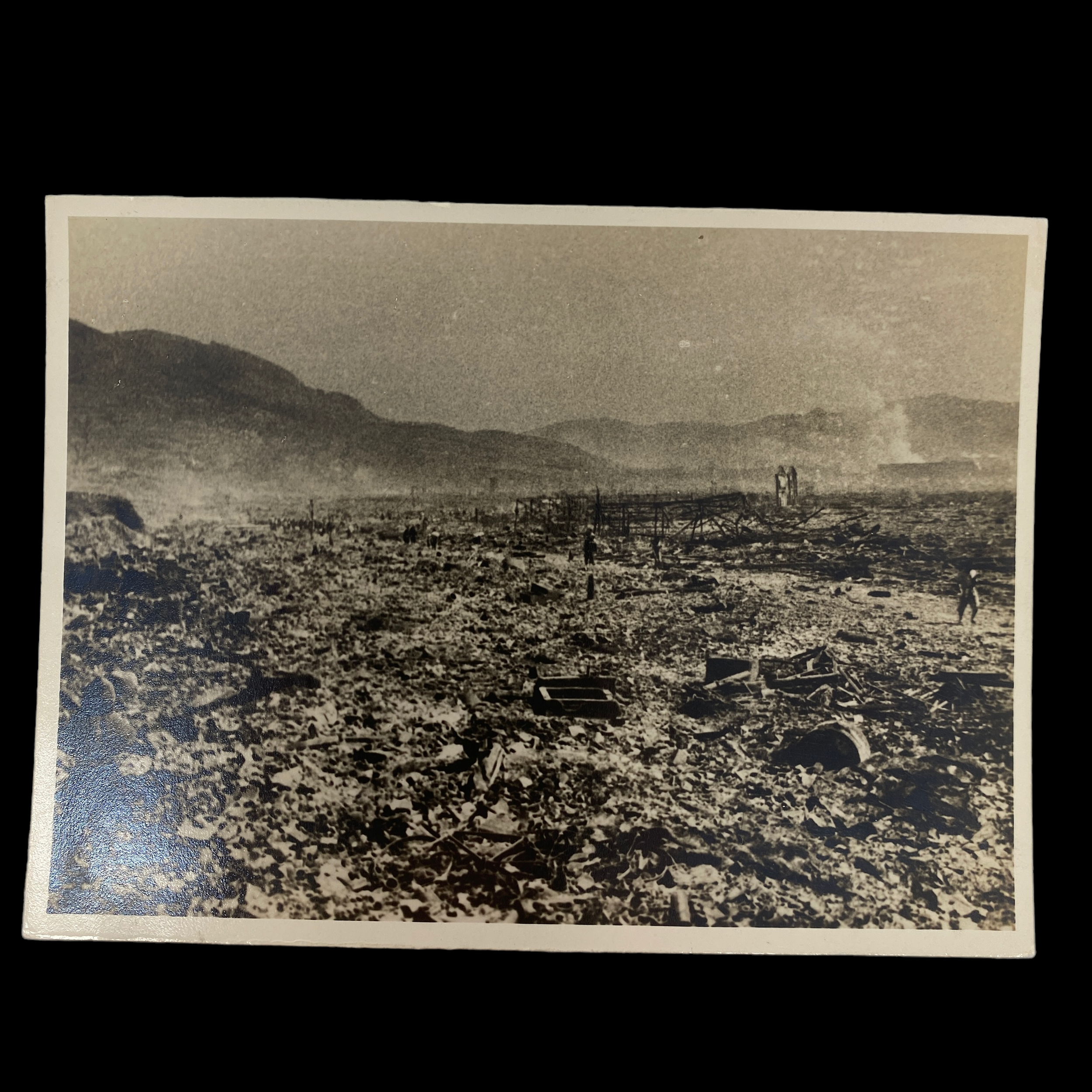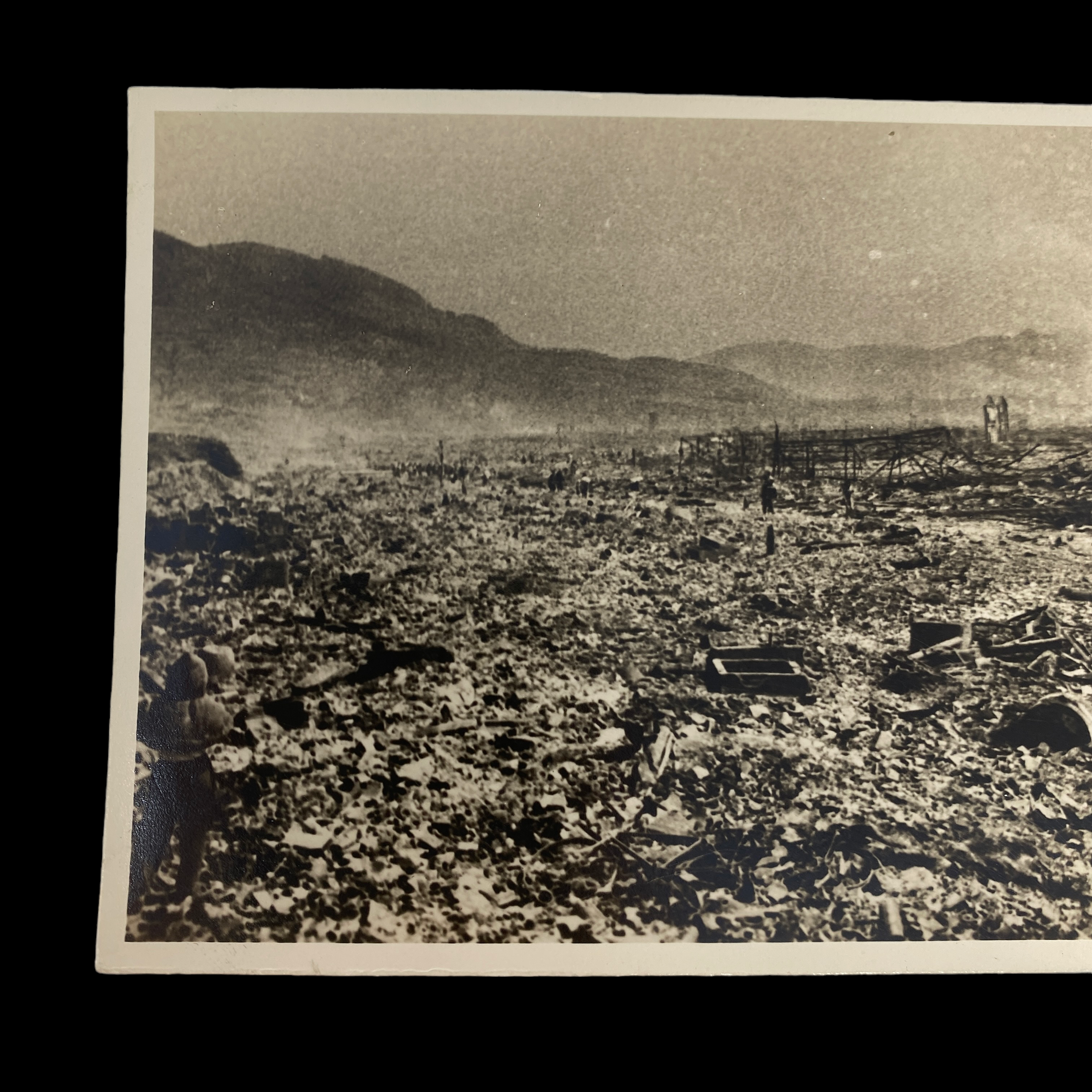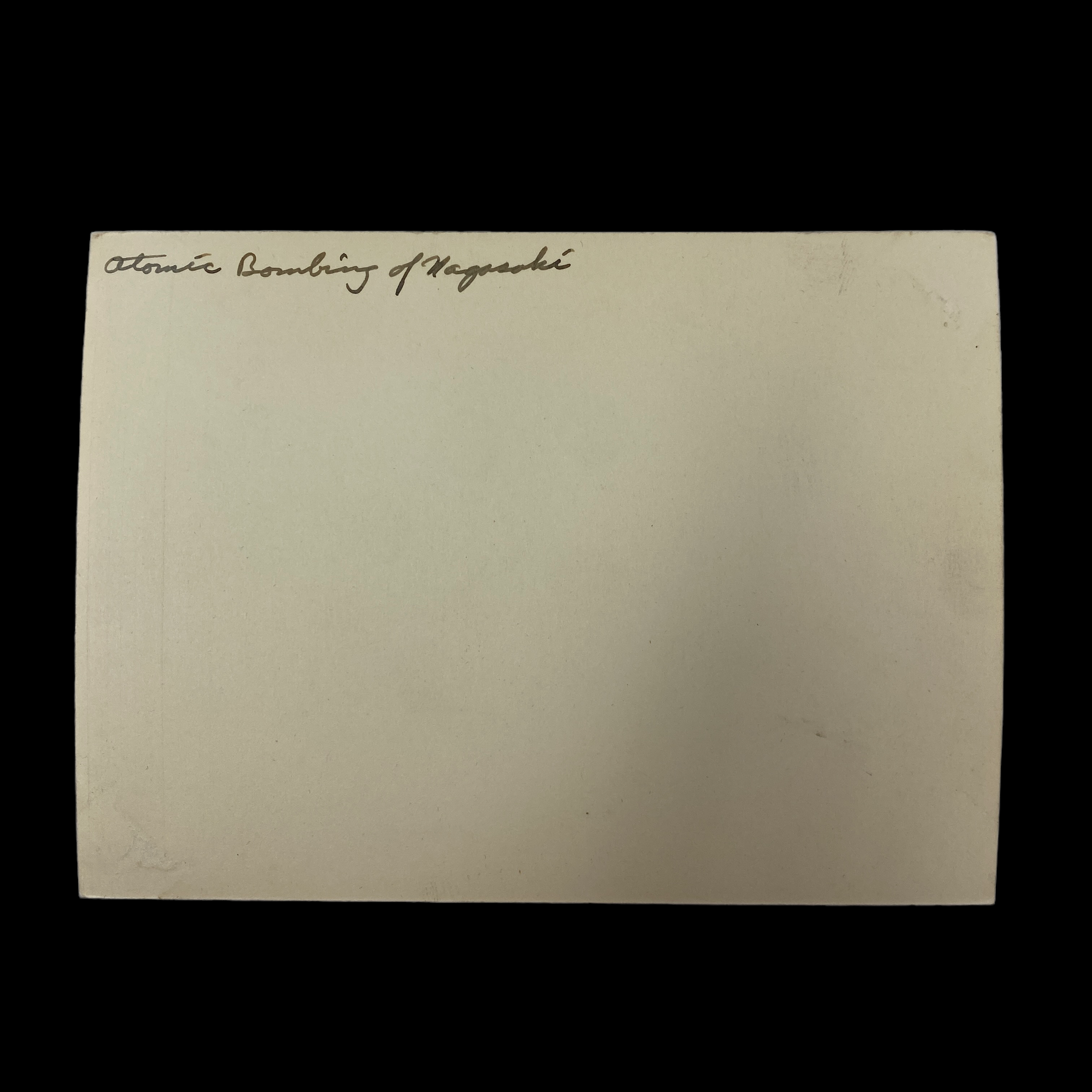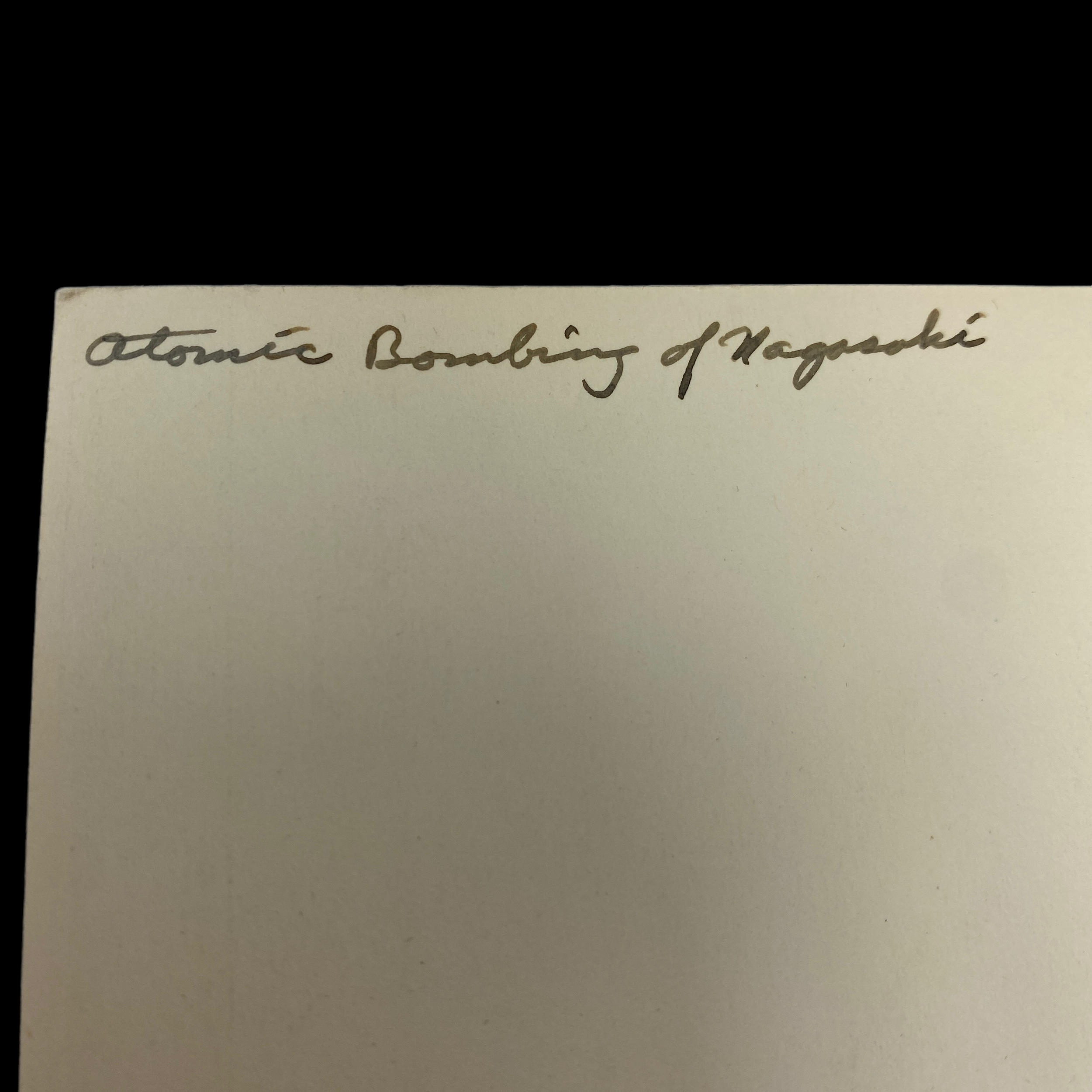RARE! Original WWII 1945 Nagasaki Atomic Bomb Aftermath Photograph (with rare inscription on back)








RARE! Original WWII 1945 Nagasaki Atomic Bomb Aftermath Photograph (with rare inscription on back)
Comes with hand-signed C.O.A.
This incredible and museum-grade WWII-era Nagasaki atomic bomb aftermath damage photograph was taken shortly following the world’s second atomic bomb drop. Original Nagasaki aftermath photographs like this are extremely rare as some of them have never been published given the CONFIDENTIAL and SECRET nature of the bombs. These original images are the first photographs on the ground following the atomic bombs being dropped.
On August 6, 1945, during World War II (1939-45), an American B-29 bomber dropped the world’s first deployed atomic bomb over the Japanese city of Hiroshima. The explosion immediately killed an estimated 80,000 people; tens of thousands more would later die of radiation exposure. Three days later, a second B-29 dropped another A-bomb on Nagasaki, killing an estimated 40,000 people. Japan’s Emperor Hirohito announced his country’s unconditional surrender in World War II in a radio address on August 15, citing the devastating power of “a new and most cruel bomb.”
By the morning of August 9, 1945, Soviet troops had invaded Manchuria and Sakhalin Island, but there was still no word from the Japanese government regarding surrender. At 3:47 AM the B-29 Bockscar took off from Tinian. The aircraft was piloted by Maj. Charles Sweeney, with Capt. Kermit Beahan serving as bombardier and Manhattan Project veteran Comdr. Frederick Ashworth in the role of weaponeer. Their payload was Fat Man, the plutonium-fueled implosion device similar to the bomb detonated at the Trinity test. Unlike Little Boy, Fat Man was fully assembled when it was loaded onto Bockscar, and shortly after takeoff Ashworth armed the device. As with the Hiroshima bombing, the strike plane was preceded by other B-29s performing weather reconnaissance, and light haze but relatively clear skies were reported over the primary target of Kokura.
At about 9:45 AM local time Bockscar reached Kokura, but by then visibility had degraded badly. Thick clouds and haze obscured the area, possibly the result of a firebombing attack on the nearby city of Yahata the previous night. Three attempted bombing passes failed to yield a clear view of the target, the city’s massive arsenal. Roughly 45 minutes passed as Bockscar lingered over Kokura, and concerns about diminishing fuel reserves and Japanese antiaircraft defenses led Ashworth to conclude that they would have to proceed to the secondary target. Sweeney turned the plane south toward Nagasaki.
Geographically, Nagasaki was not an ideal target. Whereas Hiroshima was flat and the bombardier’s aimpoint was a visually distinctive feature near the city centre, the urban area of Nagasaki was divided into two coastal valleys separated by a range of hills. The aimpoint would be a Mitsubishi arms plant near the city’s harbour. This site was located between the two densely populated valleys, but the uneven terrain would reduce the destructive potential of a weapon that was significantly more powerful than the bomb that had been dropped on Hiroshima.
Shortly before 11:00 AM local time, Bockscar arrived at Nagasaki only to find the city shrouded in thicker clouds than Kokura had been. By this point the aircraft was running so low on fuel that Sweeney notified the crew that they would only be able to make a single pass over the city. A gap in the clouds appeared far north of the intended aimpoint, and Beahan released the bomb. The bomb descended to an altitude of 1,650 feet (500 metres) and, at 11:02 AM, exploded over the Urakami Valley, northwest of the city centre. Fat Man detonated with the explosive force of 21,000 tons of TNT. An estimated 40,000 people were killed instantly, and at least 30,000 more would succumb to their injuries and radiation poisoning by the end of the year. An exact accounting of the death toll would prove impossible, as many records were destroyed by the bomb. About 40 percent of the city’s buildings were completely destroyed or severely damaged, but a significant part of Nagasaki—particularly in the southeastern industrial and government district—was relatively unscathed. Bockscar was jolted by the first of a series of shockwaves as it flew away, and observation planes captured photographs of the mushroom cloud as it rose tens of thousands of feet into the air. Unable to return to Tinian because of his increasingly desperate fuel situation, Sweeney guided Bockscar toward Okinawa, where he brought the aircraft in for an emergency landing.
The aftermath of the bombing:
At noon on August 15, 1945 (Japanese time), Emperor Hirohito announced his country’s surrender in a radio broadcast. The news spread quickly, and “Victory in Japan” or “V-J Day” celebrations broke out across the United States and other Allied nations. The formal surrender agreement was signed on September 2, aboard the U.S. battleship Missouri, anchored in Tokyo Bay. Because of the extent of the devastation and chaos—including the fact that much of the two cities' infrastructure was wiped out—exact death tolls from the bombing of Hiroshima and Nagasaki remain unknown. However, it's estimated roughly 70,000 to 135,000 people died in Hiroshima and 60,000 to 80,000 people died in Nagasaki, both from acute exposure to the blasts and from long-term side effects of radiation.